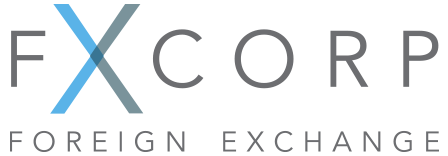USD Gains as Trump Holds Ukraine Talks
AUD
The Australian dollar is a tad lower this morning after a muted overnight session was dominated by offshore flows. Asian equities started the week mixed, the Shenzhen +0.9%, Nikkei +0.8% and Hang Seng -0.4%. Locally the ASX 200 climbed +0.2% as communication and technology sectors lead gains of +1.4% and +0.8%. Domestically there’s little new data; Westpac’s Consumer Sentiment index is expected to increase by +0.6% later this morning, and attention remains on Jackson Hole next week. To monetary policy, the RBA’s forecasts implicitly assume further cash-rate cuts, a view reflected in market pricing last week and keeping the medium-term bias tilted toward easier policy. Outside factors; intermittent dips in US yields and headlines from President Trump’s talks with European leaders on Ukraine, remain the main intraday drivers for the AUD.
USD
AUD/USD opens lower at 0.6491. The U.S. Dollar strengthened as Trump held talks on ending Russia's war in Ukraine, and traders pared bets on a September Fed rate cut before a speech on Friday by Fed Chair Powell. A slow start to the week saw little movement on Wall St. with all three major indices closing unchanged on the day. U.S. 10-year Treasury yields are roughly mid-4% (around 4.3%), which has kept the greenback broadly steady; market pricing still favours a September cut but the path is seen as gradual and data-sensitive. Ukraine has offered a large weapons-and-security package to win guarantees, a headline that, together with White House talk of higher tariffs on India, briefly grabbed attention but only produced muted FX moves. The Dollar Index remains inside last Friday’s range, the calendar is light today, Fed Minutes on Thursday, along with Flash PMI’s and Jackson Hole later this week are the key events to watch for fresh dollar direction.
EUR
AUD/EUR is marginally down at 0.5565. FX action is muted this morning after last week’s swings; European equities have rallied but the euro is largely trading on cross-market flows and risk sentiment rather than fresh domestic surprises. Yesterday, the DAX and CAC fell -0.2% and -0.5% respectively. The euro-area trade surplus narrowed to €2.8bn in June, as exports fell 2.4% m/m while imports rose 3.1% m/m; a clear reminder of softer external demand and stronger goods inflows. Markets are now focused on this week’s Flash PMIs and any ECB commentary that follows. Brussels is also monitoring U.S. talks on tariff exemptions for autos and industrial goods, though that process has so far had only limited market impact.
GBP
AUD/GBP opened at 0.4807 and is trading broadly flat. Sterling remains within recent ranges, with the cross slipping back toward levels seen in June and July. UK markets were higher overnight, with the FTSE +0.2%, and sentiment is cautious ahead of a busy UK calendar later this week (CPI mid-week, flash PMIs on Thursday). For now, moves are being driven by broad risk appetite and yield moves in the US and Europe rather than fresh domestic catalysts, the FX response has been relatively muted.
NZD
AUD/NZD is down very slightly at 1.0965. NZ PPI output and input both eased to 0.6% q/q, reinforcing softer price pressures. Swaps price a near-certain 25bp RBNZ cut to 3.00% on Wednesday, putting downward pressure on the kiwi and nudging the cross higher. With little other domestic data, the RBNZ decision and its guidance will be the main near-term driver.
